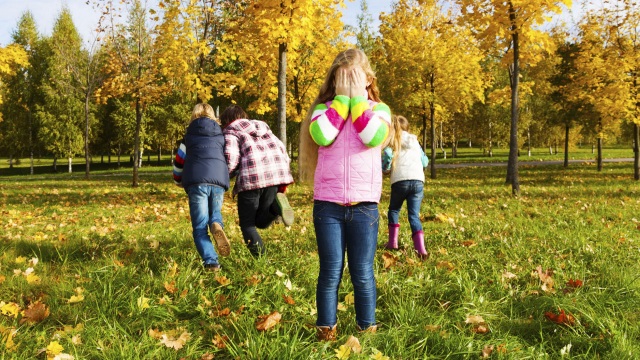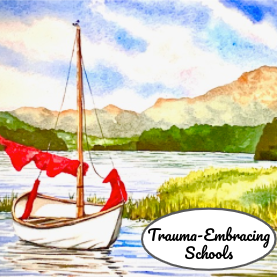 If a tree falls in the woods…no, wait. If a student experiences a traumatic event but no adult authority figure acknowledges it, does that event have devastating long-term affects? Always, the research says.
If a tree falls in the woods…no, wait. If a student experiences a traumatic event but no adult authority figure acknowledges it, does that event have devastating long-term affects? Always, the research says.
And that has been my experience too.
Way back in 1997, the now-renown ACEs study (Adverse Childhood Experiences), documented that traumas in childhood predictably alters the quality of a person’s life FOR the duration of their lifetime (increased risks for major diseases, cancer, divorce, substance abuse, and other self-harming behaviors). 70% of all US citizens have at least a score of 1 ACE. Divorce, for example, counts as 1. After 6 ACEs, your life expectancy decreases by 20 years.
Rut -roh.
Unless…
ONE caring adult finds out about the trauma, acknowledges it, and provides a stable, caring sounding board for the student. It is the first proven mitigating factor in the long-term devastating effects of trauma.
It starts with knowing what constitutes trauma or Adverse Childhood Experiences. A parent who is emotionally abusive, physically abusive, or sexually abusive easily comes to mind. But what about the parent who threw the pan at my best friend’s head, hitting the wall instead? “She missed,” my friend said. “That’s not physical abuse.” Which is why we have to be taught what is abuse in childhood. Yes, a pan at the head, whether it hits you or not, is physical abuse. Divorce is trauma to a child. So is homelessness, homophobia to a student who is gay, or a father berating a mother.
It turns out, when the list of traumas that affect students’ developing brains and bodies is spelled out in its entirety, very few of us have been exempt.
Which brings me to the one place that is teeming with kids from trauma backgrounds and could use an adult stepping in….schools.
For 12 years, I worked in a last-chance high school full of students who wore trauma around their necks in the form of placards of friends and family killed. Some students even tattooed RIPs onto their bodies as reminders of loved ones gone. These were clues in plain sight. No detective work required. Still, for too many of those years, I lumped traumas together (family member out of the picture, a friend killed, a major illness in the family) and avoided asking about personal specifics.
But unhappiness is always personal.
I didn’t ask about the student hurts in plain sight because I didn’t want to make students sad or embarrassed. I thought it was better if I didn’t remind students of people gone, sadness in their pasts. Only, RIP tattoos are there because someone wanted to etch a heartache into their DNA to make visible a person who is absent.
Trauma is personal and no two traumas are alike. Addressing trauma is the least a teacher can do, and I should have known that. What I needed to say was, “Tell me about the person whose picture is around your neck. What were they like?” or “Your mom died. That’s so sad. Tell me about her.”
The reason I should have known that is because I was that kid. I lived in fear of my bipolar dad. In high school, my dad was arrested at my brother’s ballgame for harassing my stepdad. Handcuffs and flashing lights in front of what felt like half my school.
In response to chaos at home, I started leaving school early several times a week. My grades dropped. On the softball field, I went from team MVP to a player who couldn’t catch any ball hit to right field. Trauma in plain sight. But no one wanted to embarrass me by saying something.
I saw my school counselor when she called me in for my once-a-year check-in. I could tell she didn’t know me at all–we’d only met once before. I got decent grades and wasn’t a behavior issue. She didn’t ask about my home life. She did ask what I wanted to be. I said a fireman or astronaut because they were sarcastic cliches. She wrote them down and didn’t ask questions.
After 6 ACEs, your life expectancy decreases. Rut-roh.
Unless…The one factor that can mitigate the devastating effects of childhood trauma includes one caring adult. On a Friday during my sophomore year of high school, I was in Dr. Wendell’s science class, crying behind my hair. He saw me and handed me a tissue. On Monday, he said, “I was thinking about you. I was worried.” And I rejoined humanity.
That was everything, and that is least a teacher or a counselor can can do. Because school staff are the people students see most often. School staff are the people students look to as the authority figures when their parents are not there.
That’s why school staff are the detectives AND first responders in hidden student trauma. When clues are there, we have to ask about them. Someone could have asked me, “Jessie, I saw your dad getting arrested at the ball game. That’s awful. How are you?” It’s not nosey. It’s caring. I was thinking about it anyway. When you talk about it, you take shame’s stinger out.
I didn’t recognize my trauma overwhelm until a female student, a girl who’d had wild mood swings in class, stayed with me one afternoon finishing an assignment. I’d asked her to describe an important moment in her past. She wrote about when her mom died from cancer, how her dad didn’t know what to do, and how her teachers didn’t talk to her about it. It was then that she started acting out. The next year, her brother was shot and killed. She changed schools and started getting in trouble, and still, no one asked her what was wrong. No one at her new school knew her past. No one was playing detective. No one allowed her to share that her mom had died, giving her a chance to have a caring adult acknowledge that it was so, so sad. And her brother had died. And that was a whole different kind of sad. We talked about it as she wrote out her story, and her behavior in school improved dramatically.
Signs of Trauma: Trauma is there in plain sight in students who act out, students who drastically alter their appearance, students who come to class on mind-altering substances, those who cut, those who cut class, and those who suddenly change demeanor.
Hidden trauma can only be revealed through the right kind of prompts and through the vulnerability school staff are willing to exhibit. Once I figured out that what I did as a teacher created opportunities for students to reveal hidden student trauma, my world changed, as did the lives of my students.
I never push students to tell me information. I think of classroom prompts as dropping a line without a hook: I’m just seeing if the fish has been waiting there, wanting to bite, and has never been given a chance. I use non-invasive, content appropriate prompts for students to share about themselves. I structure the shares so that students can reveal a safe amount to their classmates and more to me if they want to. My workshop on Hidden Student Trauma has worksheets and guidelines for safe prompts and teacher-led student sharing.
I used to think I’d have to BE a counselor in order to have an empathetic response. Then I took a 9 month life coaching course and learned that everyone can respond to hurt with a compassionate, “That sounds hard. Tell me more.” Some students elaborate, others just relate that is IS hard, it WAS hard, and it continues to BE hard. That, as it turns out, is enough.
I always refer students to the school’s counselor, citing my concerns. I also tell the student that I have referred them for counseling, generally with the fear-calming, “Have you met the counselor? Let me walk you down to their office. Counselors are great people to talk to.”
We model care, compassion, and ask the uncomfortable questions that bring the hurt into the light where it can start to heal. Teachers, counselors, and school staff rock like that.
To have me speak at your school about combating visible and hidden student trauma, email me at: JessieDorinCoaching@gmail.com

Reblogged this on Jessie Dorin Coaching and commented:
In a nutshell, This is ACEs education…
LikeLike